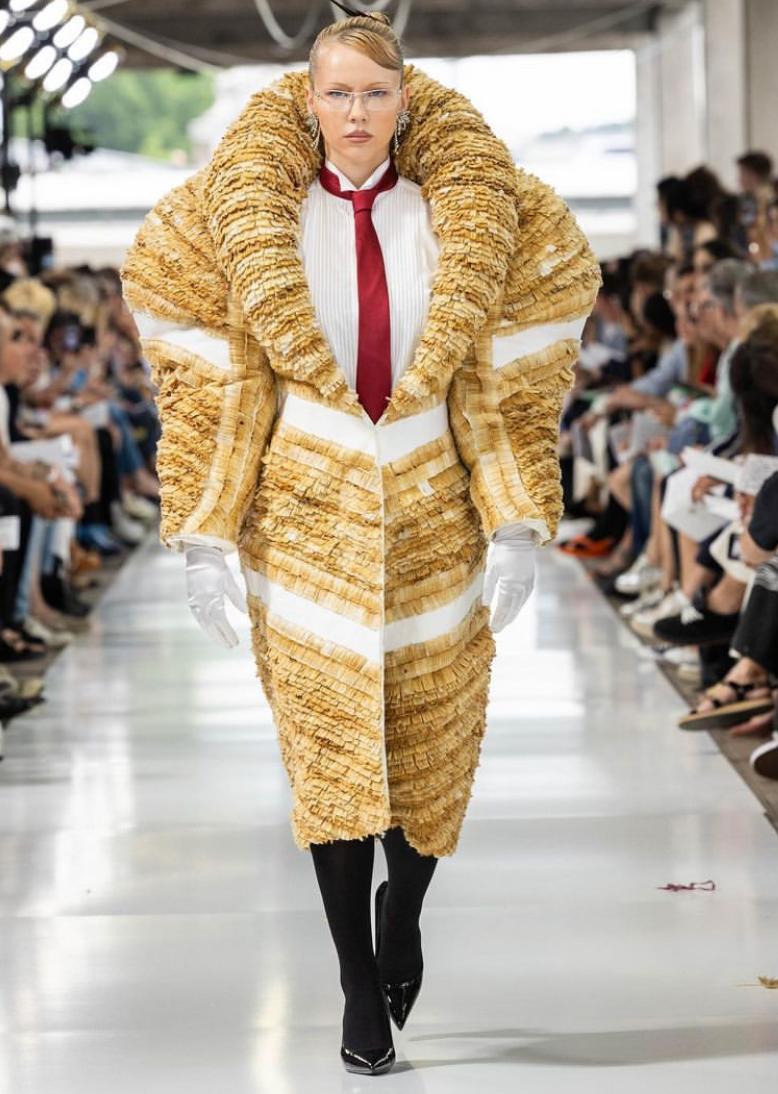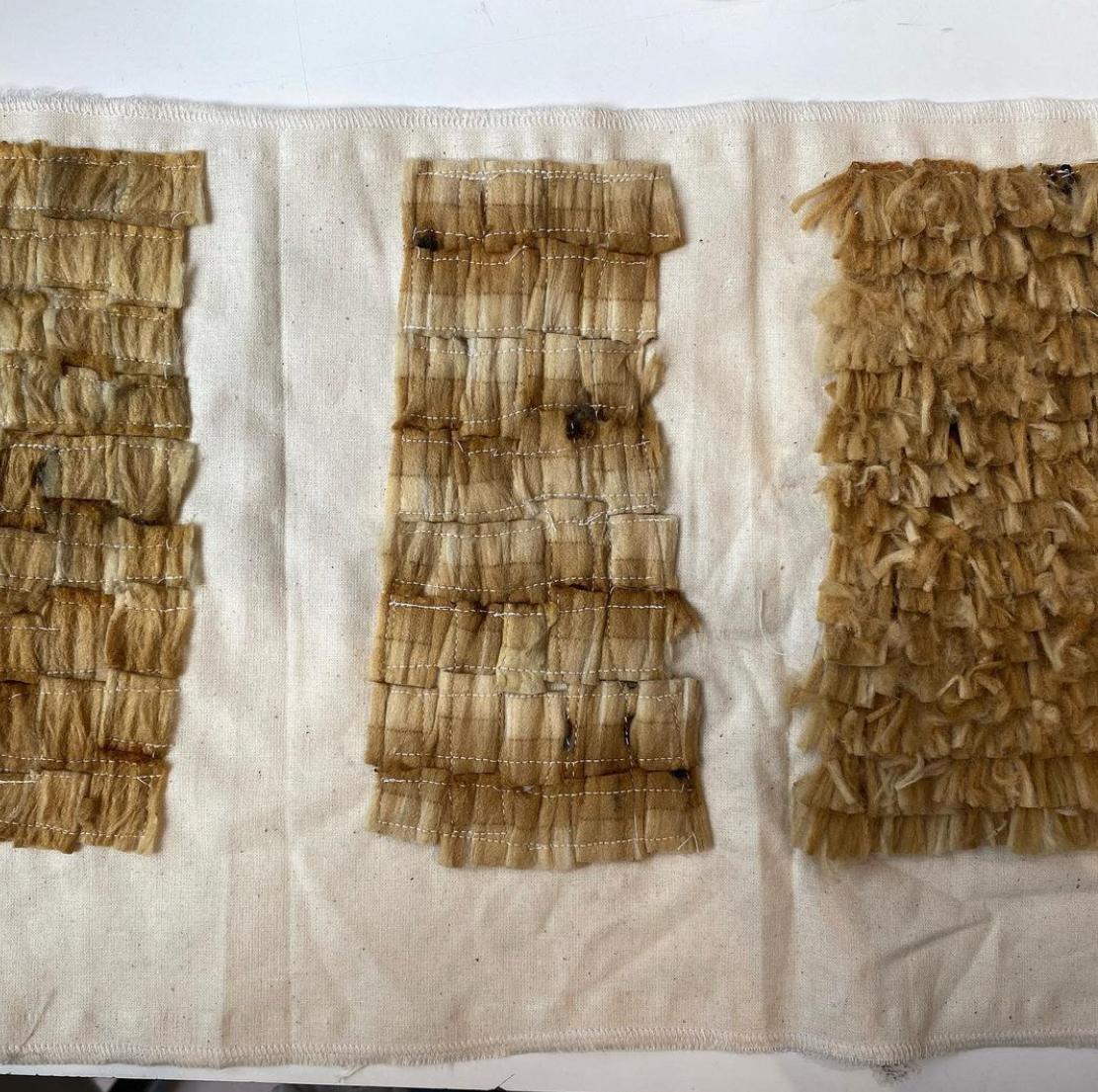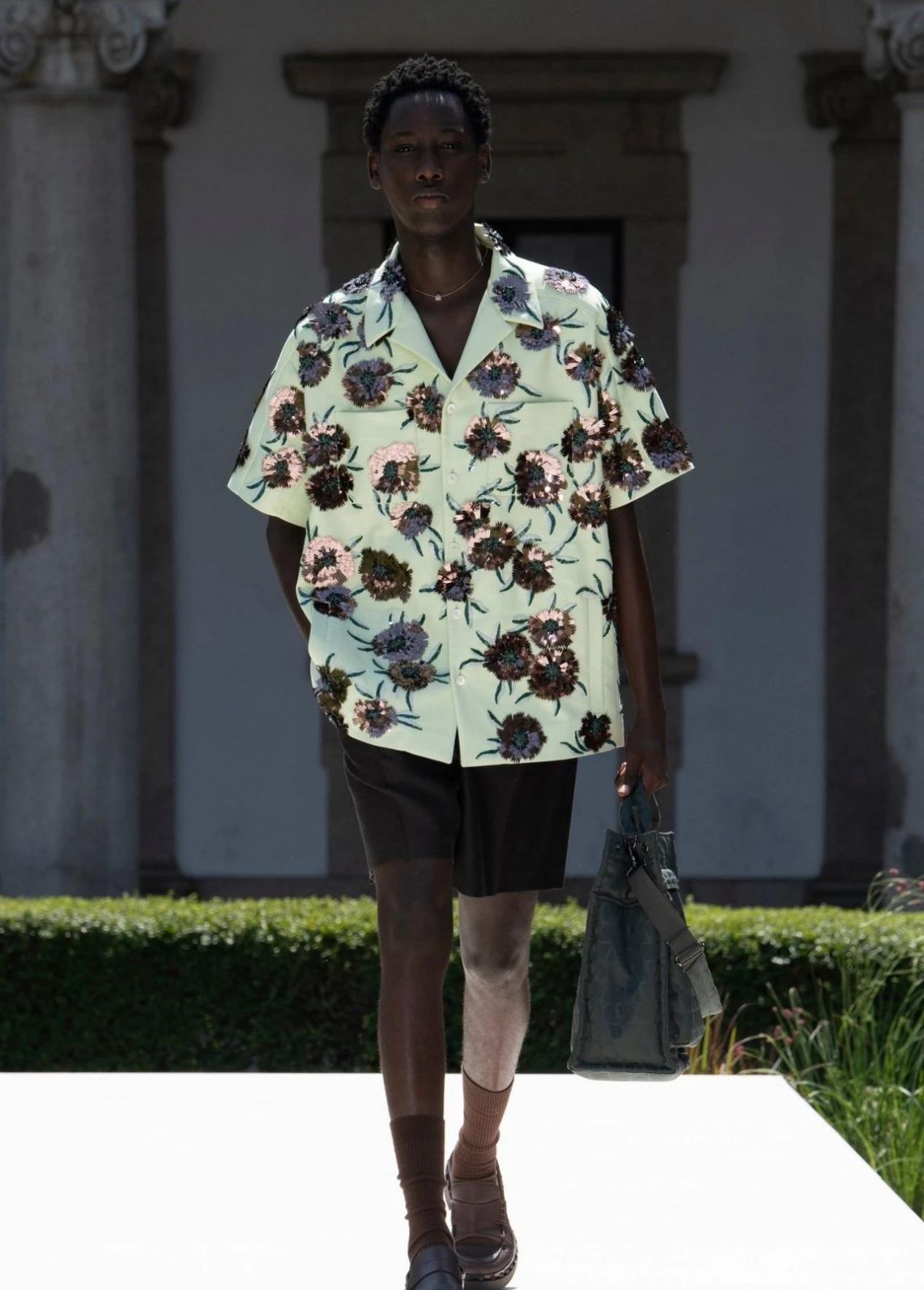How familiar are you with sustainable fashion at fashion week, like using cigarette butts for clothing and bio-based shoe soles

How familiar are you with sustainable fashion at fashion week, like using cigarette butts for clothing and bio-based shoe soles?
The 2024 Spring and Summer Men's Fashion Week has finally come to an end. In addition to the exquisite clothing on the show, sustainability is still a topic discussed in the fashion industry. This Milan Spring/Summer Fashion Week abandoned paper invitations and replaced them with more environmentally friendly electronic invitations. In addition, the brand adopts a variety of sustainable design methods, allowing the public to see the many possibilities of sustainable fashion. Today, let’s take a look at how these designers play with sustainable design.

"Clothes made from cigarette butts"
Compared with fashion brands, newly graduated students do not need to consider market demand. They have wild ideas about sustainable design and recycle all kinds of strange materials for secondary creation. At the graduation show of the French Fashion Institute (IFM), Jiawei Han's clothes made of cigarette butts became popular on social networks.
The designer collected and dismantled thousands of used cigarettes in Paris, peeled off their outer layers and sewed them together to create a garment made of cigarettes. This idea breaks the public's perception of traditional clothing fabrics. In the eyes of designers, as long as the material is used, it has the potential to turn waste into treasure.

"Embrace the ocean"
Dutch brand Botter is good at finding inspiration from the ocean and the Caribbean, where the ecological environment is worrying, and is committed to protecting the natural environment. The opening look of this show is a red plastic mesh woven vest. Through three-dimensional expression techniques, it looks like a pair of plastic armor, in order to satirize the pollution and damage of human beings to the marine environment.
This season's shoes are in collaboration with Reebok, and the designer uses recycled materials using 3D printing technology to create environmentally friendly sneakers. At the same time, they also use computer technology and additive manufacturing methods to reduce the waste of materials.
In addition, the designers also collaborated with Belgian artist Daniel Von Weinberger to create accessories such as necklaces and keychains from discarded toys.

"Reduce inventory and recycle"
Marine Serre, a brand from France, has been committed to exploring sustainable fashion since its establishment. The brand advocates recycling and secondary creation of existing materials to minimize waste and maximize the use of existing resources. Their search for sustainability has paid off, and today, about 50% of their products are made from recycled and upcycled materials, with the remainder made from biodegradable yarns and recycled fibers.
This time the designer combined recycled T-shirts and burlap to create delicate dresses that hug the body, and used recycled crochet materials to create colorful knitted suits. Colorful garments made from recycled fabrics brought the show to life.
They also tried to use stock fabrics in the production of the new season, and various patchwork jacquard fabrics were redesigned, showing a variety of sustainable design methods. The environmental protection concept advocated by the brand to reduce inventory and recycle fabrics provides more references for the current sustainable fashion.
"Living in harmony with nature"

This time Fendi moved its latest men's collection to their newly built factory outside Florence. The new factory was designed by Japanese architect Kengo Kuma. He used natural building materials and integrated Mediterranean shrub species, olive groves and native plants into the architectural landscape. , presenting a picture of harmonious coexistence of nature and architecture.
In terms of accessories design, the designer used environmentally friendly paper natural materials to redesign the iconic Fendi bag, and the shoes were also made using 3D printing technology and bio-based rubber soles. These fashionable items made from the combination of high technology and biotechnology have become the current popular trend.

"Protecting biodiversity with the power of fashion"
At this men's wear week, Valentino has the courage to challenge traditional men's wear, break the inherent concepts of men's wear, and re-examine the aesthetics of contemporary men's wear. The designer uses a large number of flowers to decorate the clothes through printing and embroidery techniques to create a romantic atmosphere.

At the same time, the brand also showed its focus on sustainability in this show. Valentino cooperated with Spazio Meta, a company in Milan that specializes in recycling and reselling waste materials, to achieve recycling. This collaboration minimizes waste in order to be sustainable and reduce carbon emissions.
In order to demonstrate its contribution to the protection of biological diversity, Valentino cooperated with the Green Department of the Milan Municipal Government to plant an oak tree in the public garden at the entrance of Venice. Through these actions, the brand lets the public know about the efforts made by fashion brands in the development of sustainable fashion.

"A show composed of 192 bales of linen"
This time, the Italian brand Zegna reflected its pursuit of sustainable fashion from the show layout. In the Piazza San Federele in the center of Milan, 192 bales of linen transported from the fields of Normandy were displayed in the show. These bundles of linen, bathed in the sun, blending natural linen plants with the urban landscape, have become a unique landscape at Fashion Week.
Under artistic director Alessandro Sartori, linen has become Zegna’s signature fabric. They cooperated with Italian craftsmen to produce environmentally friendly Oasi Lino series fabrics, which were used in the production of this spring and summer series. The brand has also set a goal for Oasi Lino fiber to be certified as 100% traceable by 2024.
This allows the public to be more transparent about the carbon footprint produced in clothing production. Through this commitment, Zegna reaffirms its pursuit of green fashion and its leadership in the sustainable fashion industry.
During this Men's Fashion Week, designers' creative use of materials allowed the public to see the multiple possibilities of sustainable fashion. Many fashion companies are integrating technology and fashion from the perspective of fabrics, and exploring high-tech fashion fabrics.
At the same time, these talented designers also recycle various wastes in life to create clothing and accessories. Their unconstrained creativity and unique sustainable design concepts are used in their designs to show the public a different approach to sustainability, awaken the public's awareness of environmental protection, and make the home we live in greener.
